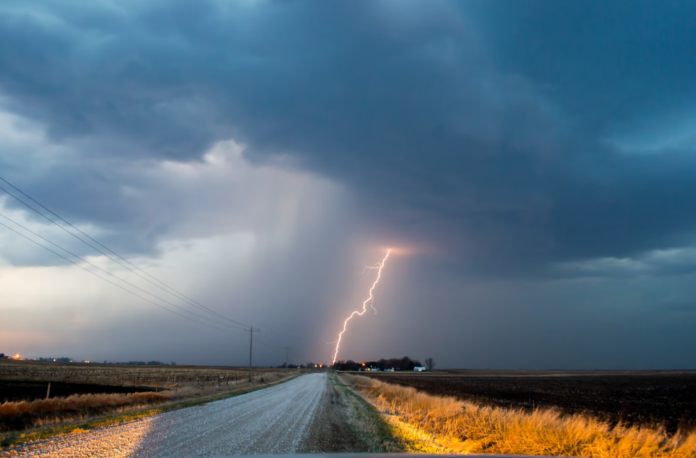If you live in an area with extreme weather conditions, it’s essential to be aware of the ways that your roof can be damaged. From high winds to heavy snowfall, there are a number of factors that can put your roof at risk. Here are six ways that extreme weather can damage your roof:
High Winds
It’s always important to keep an eye on your roof, especially after a high-wind event. High winds can have a real impact on the structural integrity of your roof, specifically your shingles. The force of the wind can make loose or come apart shingles that were not installed correctly in the first place. Additionally, the pressure of the wind can cause even high-quality shingles to peel away from the roof surface, revealing areas with no protection against weather-related damage such as rain and sun exposure. Signs to look out for include missing or cracked tiles and visible wear on seals around vents and chimneys.
Heavy Rain
Heavy rain can cause significant damage to your roof, and it’s important to be aware of the signs that could indicate a leak. The constant pressure of heavy rainfall can tighten tile nails and loosen the tiles, allowing water to seep in through vulnerable spaces. If you live in an area that regularly experiences intense downpours, you should inspect your roof often to look for broken, cracked, or out-of-place tiles. Check your attic and ceilings, too. Any damp patches or bubbling paint are surefire indicators for getting your roof inspected by roofing contractors.
Excessive Snow and Ice Buildup
Winter can bring snow and ice, but unfortunately, it can also bring damage to your roof. Snow and ice buildup can cause major problems, as the added weight of significant accumulations can be too much for shingles or tiles. These buildups may also lead to increased melting water that seeps and then refreezes on the roof, resulting in severe damage. Be aware of these potential issues by looking out for sure signs, such as excessive ice dams at the edge of your roof, moisture spots, sagging roofs, and other signs of water damage inside your home.
Extreme Heat
Summer days can be a great time to relax and soak up some sun, but it’s important to stay aware of the potential damage that can be caused by heat on your roof. High temperatures can cause the shingles on your roof to become warped or curled; this not only decreases the aesthetic appeal of your home but can also reduce the lifespan of your roof as well. Pay attention to signs such as curling, shrinking, or cracking in the shingles, and make sure you address any problems with a qualified professional as soon as possible.
Large Hail
Many people don’t consider hail when it comes to maintaining their roofs, yet it can be one of the most damaging causes of roof damage. Hail not only has the capacity to dent or crack shingles but can also weaken the granules on asphalt shingles and trap moisture that eventually rots wood shakes or cedar shingles. In addition to the visible signs of dented or cracked shingles, other things to look out for are missing granules on the shingles, black streaking along valleys, or rotting wood shakes and cedar. It’s important to identify damage quickly in order to limit further deterioration of your roof.
Lots of Sunshine
Sunshine can be a surprisingly damaging force to your roof. The sun’s ultraviolet rays, which come in great strength during hot days and long summer seasons, can cause the color of the roof to fade, diminishing its overall aesthetic appeal. While this kind of damage may not always have an immediately noticeable effect, it is still important for homeowners to note it as it could indicate further wear and tear.
The weather can wreak havoc on a roof, so it’s essential to keep tabs on it regularly and not just after noticing signs of damage. High winds, heavy rain, snow and ice, heat, and hail can all cause different levels of damage. Sunrise can also fade the color of your roof over time but won’t make the same impact as other kinds of weather. Be sure to check for any missing shingles after storms or high winds in particular – if you notice any missing or coming up soon, it’ll be necessary to call a roofer as soon as possible. Keeping an eye out for potential problems offers peace of mind that your roof is in good shape for years to come.















